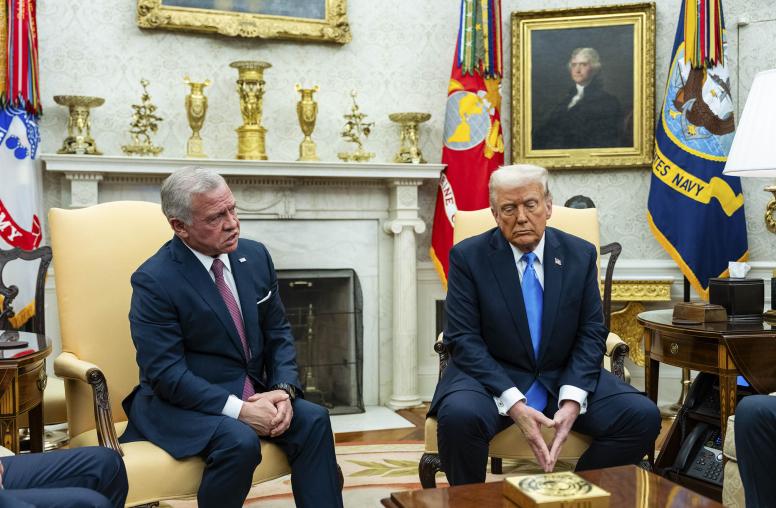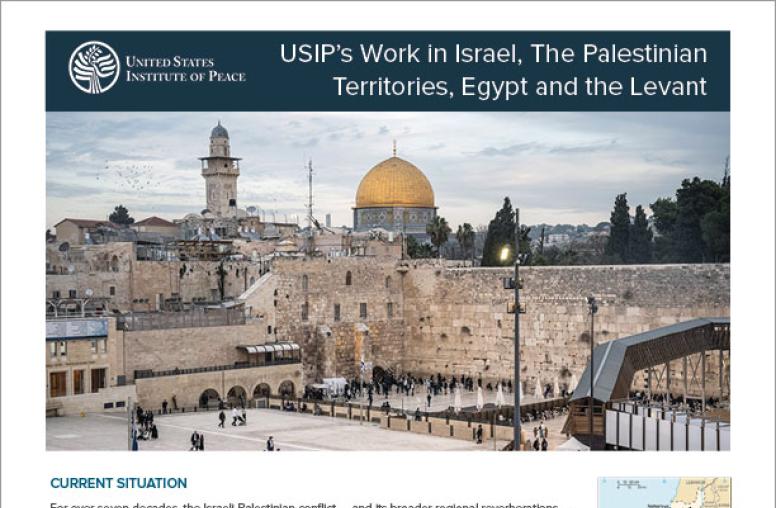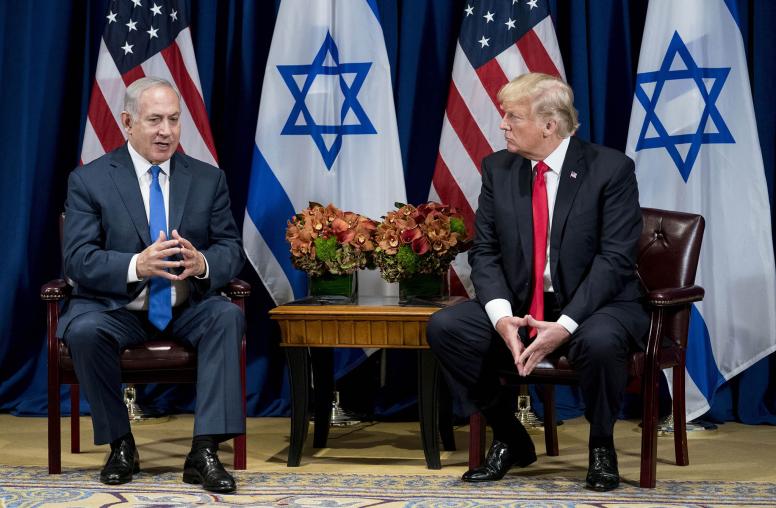Israel-Gaza Conflict: A Short Confrontation with Disproportionate Implications
Without a political horizon for Palestinians, the cycle of violence in Gaza is likely to continue.
Editor’s Note: This was originally published in “Critical Neighbors: Egypt, Jordan, and the Israeli-Palestinian Arena,” a collection of written analysis by members of an Israel Policy Forum task force offering four perspectives — Israeli, Palestinian, Jordanian and Egyptian — on recent events in Jerusalem. USIP’s Ambassador Hesham offers the Egyptian perspective.
No one was ever in doubt about the damage that the Israeli army can inflict on Gaza, or in the occupied territories in general, in any military confrontation. The gap in the balance of power is one of the widest in the region. This has been the case in the wars that took place in 2008, 2012, 2014, and 2021, and in the latest military attack that ended on August 7, 2022. The duration of the conflict, the extent of the destruction in Gaza, the regional and international response and other factors varied widely. However, unsurprisingly, like in previous confrontations, each side claims that to some extent it was able to achieve its objectives.

Another Episode in the Unrelenting Cycle of Violence
Israel achieved several important objectives in these wars and military operations. In the latest attack, it assassinated two key Palestinian Islamic Jihad (PIJ) leaders and destroyed several of the organization’s military sites. It mostly achieved its objective of separating Hamas and PIJ; separating Gaza, the West Bank, and Jerusalem; and separating the Palestinians and Arab Israelis — three characteristics that contributed to the spread of violence during the previous war in May 2021. This is one of the reasons why Israel avoided a prolonged war, as this would probably have resulted in further complications on these fronts. However, despite the cease-fire, Israeli forces have intensified incursions in the West Bank, killing four people, including an al-Aqsa Brigades commander, and apprehended numerous Palestinians undermining at least one of these objectives.
Israeli reports indicate that the performance of the Iron Dome is improving, but so are the capabilities of Palestinian armed groups to launch rockets. The Iron Dome had an 86% interception rate in 2012, 89% in 2014, 94% in 2021, and 97% in the last operation. However, Israel did not expect these armed groups — who have been under siege in Gaza since 2007 — to launch more than 4,369 rockets in 11 days in May 2021, or 1,100 by PIJ in fewer than a mere three days. The range of rockets increased from two to three kilometers in 2001 to 160 kilometers in 2014. Ineffective as these rockets are, they still terrorize Israeli communities and resulted in Israel closing Ben Gurion Airport in May 2021 and diverting flights in 2022.
At the same time, the region has witnessed how Iranian assistance advanced the capabilities of Hezbollah to the point that it reached some level of deterrence vis-à-vis Israel and allowed the Houthis to attack Saudi Arabia and the UAE with significant consequences. Iran is a strong supporter of PIJ and its cooperation with Hamas has been advancing. The siege has not prevented the armed groups in Gaza from strengthening their capabilities, and this is expected to continue with Iranian support, despite all kinds of constraints.
Many in the region speculated that the upcoming Israeli elections played an important role in the recent decisions pertaining to the attacks on both Gaza and the West Bank. Prime Minister Yair Lapid, they suggested, felt the need to present his credentials to voters who are increasingly moving to the right as he has no military experience. Defense Minister Benny Gantz was also viewed as eager to advance his chances in these elections.
On the Palestinian side, Hamas supported PIJ on the rhetorical level but not militarily. It also assisted Egypt in mediating the cease-fire. However, this military confrontation allowed PIJ to demonstrate its military capability when it is on its own. Nevertheless, there is no doubt that the relations will be strained between Hamas and PIJ, who lost two key leaders and expected Hamas to be more supportive.
Egypt has been active in efforts to achieve a cease-fire in all the above-mentioned wars and military confrontations. This time it was trying to deescalate the situation between Israel and PIJ to prevent the attack and continued its efforts once it started until a cease-fire was achieved, with important involvement by Qatar. Egypt indicated in the cease-fire understanding that it will endeavor to achieve a PIJ demand that two prisoners held by Israel would be released. Defense Minister Gantz has indicated that Israel will not release them.
What Should We Expect Going Forward?
- Hamas will continue to try to maintain calm in Gaza while encouraging escalation in the West Bank.
- PIJ will multiply its efforts in order to make sure that it is independently better prepared if it is again forced to have military confrontations with Israel on its own.
- Iran is expected to continue, and probably increase, its support to Palestinian armed groups.
- It is hoped that Israel would be very careful not to undermine Egypt’s ability to intervene by demonstrating some flexibility in relation to the two prisoners held by Israel, as it is almost certain that this will not be the last military confrontation. This cease-fire is quite fragile and already contains the seeds of a return to violence.
Where to Go from Here?
The Israeli government cannot claim that it wants to strengthen the Palestinian Authority (PA) while undermining its credibility through daily incursions, assassinations, apprehensions, home demolitions, land expropriation, settlement expansion and more. The PA may soon be unable to control the security situation in areas under its jurisdiction in the West Bank.
In the latest military confrontation, Israel was able to differentiate between Hamas and PIJ. Israel should be able to explain why this differentiation cannot be applied between the PA and armed groups in Gaza, as for the past decade this is one of the main obstacles to Palestinian reconciliation. Israel should change the Netanyahu policy of holding the PA responsible for any attack, no matter the perpetrator, once it regains control over Gaza as long as other groups in the Strip are not disarmed. The ability of these armed groups to continue to resist one of the strongest armies in the world is their own measure of their success.
Addressing “the residents” of Gaza, Lapid said that Israel knows how to protect itself from anyone threatening it, but it also knows how to provide work, livelihood and a life of dignity to anyone who wants to live in peace by its side; that there is another way to live through the path of the Abraham Accords and the Negev Summit; and that the choice is theirs — knowing very well that this narrative is a nonstarter from the Palestinian perspective without a clear political horizon. What transpired reconfirms that Israel is unwilling to accept that what it calls “mowing the lawn” is not a sustainable policy and that maintaining the status quo is a myth. Shrinking the conflict, economic peace, improving living conditions and all these slogans will achieve neither Israeli security nor peace.
There cannot be a Gaza strategy without hope on how to address Palestinian national aspirations. It should be clear to Israel that Palestinian surrender is not an option. The next step for the Palestinians will most certainly be moving toward a struggle for equal rights in one state and not providing further concessions on final status issues.
Israeli leaders have been serving its short-term goals at the expense of its long-term stability and interest. Israel must decide whether it wants to end the occupation or continue to be an occupying power, because this will be a determining factor in its future path.
The PA also has its work cut out for it, as it is at a historically low level of popularity. Its performance leaves much to be desired regarding reaching a vision for achieving Palestinian national aspirations, promoting good governance and conducting elections.
The international community keeps repeating the necessity of breaking this cycle of violence with every military confrontation — a noble objective that is only paid lip service. In addition to the aforementioned Israeli and Palestinian requirements, there is an important role to be played by the region, Egypt and Jordan in particular. Moreover, President Biden said that “there must be a political horizon that the Palestinian people can actually see or at least feel,” and that “we cannot wait for a peace agreement to be reached or for every issue to be resolved to deliver on the needs of the Palestinian people that exist today.” Europeans also support these points, which are supposed to be the two legs on which progress can be achieved once there is a political will to do so. Meaningful progress is necessary to raise the risk and price of resorting to military confrontations.



